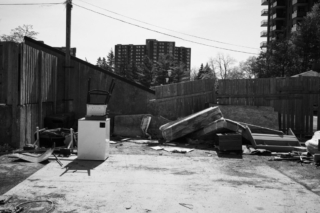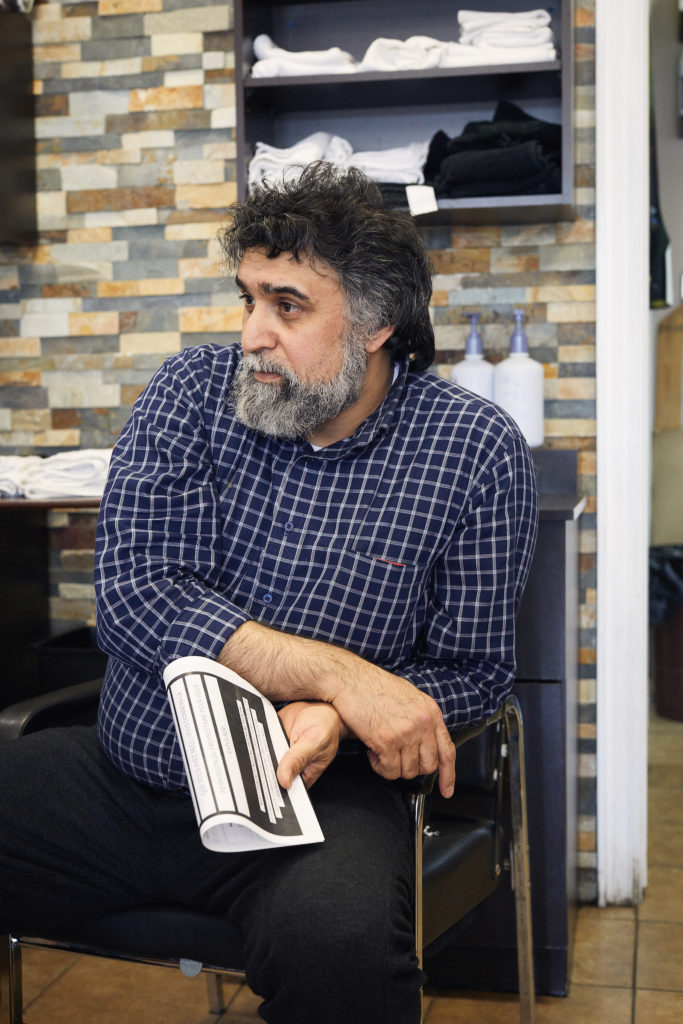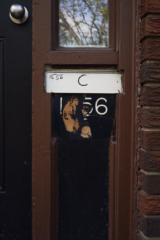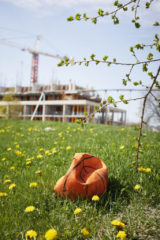Neal Rockwell is an artist, journalist and media activist based in Montreal. He is collaborating with the Herongate Tenant Coalition to create multimedia documentation of the lives and living conditions of Herongate residents. He is also working on a skillshare with tenants to help develop media and documentary skills.
Notebook is his ongoing feature, which includes a mixture of written observations and interviews, photographs and short video clips.

I met up with Mumina Egal and Josh Hawley at the Shaw Centre in Downtown Ottawa. They are community organizers currently working to organize residents in a complex of buildings in the neighbourhood known as Herongate. Tenants are facing eviction from their corporate landlord, Timbercreek Asset Management, as the units where they presently reside are slated for demolition to make way for luxury apartments. In total Herongate is home to about four thousand residents, and the current demolitions affect over one hundred families. This is following an earlier set of evictions in 2016 that saw the levelling of eighty-three homes.
The Shaw Centre – managed by a crown corporation and largely built with public funds – is a very modern building. Its enormous geodesic glass façade and perilously hanging escalators, which snake their way upward through massively high ceilings, make me think of some of the buildings from the Ghost in the Shell animé. Josh and Mumina were handing out flyers about their project to attendees of the Making Cities Livable Conference, where one of the architects hired by Timbercreek was scheduled to speak later in the afternoon. The flyers pertained to greater community involvement in the planning process of the Herongate complex, which is one of the stated goals in the Making Cities Livable Conference mission statement.
Many of the conference attendees seemed skeptical of the handouts, a few were interested, and one woman from Tacoma, Washington was particularly enthusiastic. It didn’t take long for a security detail to arrive. The head security officer indicated that we had to leave. “People have paid money to be here,” he offered as an explanation, which he let hang for a moment as if expecting or hoping that this would come off with some kind of moral authority. They didn’t bother speaking much after that; instead they accompanied us down the escalators, slowly inserting their bodies between us, gradually entering our personal space. They maintained these positions until we were safely out the door.
After this we made our way back to Alta Vista, to the Herongate Mall, or Herongate Square as it is now officially known since being redeveloped in 2012. Most of the square is occupied by parking lot, rimmed by an assortment of businesses. We ate at Shawarma Home as we prepared to embark on our project of documenting the lives and living conditions of Herongate residents. Josh noted that the Herongate Barbershop was the only local business which remained from the mall prior to the redevelopment, so it was decided that we would begin by talking to the owners there.

The head barber is a middle-aged man named Adel Turki. He was slightly guarded at first, uncertain of our motives. We mentioned the new Timbercreek apartment construction across the parking lot. He made a noncommittal comment about its niceness, but was interested when we explained that they were slated to be high-rent luxury apartments (Timbercreek Communities president David Melo prefers to call them “improved rents”). Once he became more at ease with us, Turki explained that he had been part of the initial 2016 evictions, his former home having been among those razed to make way for the new buildings.
Next we made our way to the housing complex. Herongate was built in the 1960s as one of those quasi-utopian, modernist planned communities in the spirit of England’s Milton Keynes (though of course on a much more modest scale). It is made up of a mix of apartment towers and low-rise apartments and townhomes. Initially it targeted a middle class market, while in the ensuing decades it has experienced significant decline. The only person who bothered to review Herongate on Yelp gives it one star, and includes a forceful caveat not to move in. Fifteen other users have voted in favor of her rating. Reviewer Maria B. describes moving in as “the worst mistake of our lives.” Her user photos show a dead mouse in the hallway, cockroaches, bedbugs, mold, crumbling, water-damaged drywall, overflowing garbage and so forth.
Herongate is large enough to be its own census tract, and so accurate demographic data is readily available. The population is very diverse, with only 30% of residents being Anglophone, and another 10% being Francophone. The rest of the population come from many other places, including a large number of Arabic and Somali speakers. Most of the residents are in a situation of financial precarity and many are refugees. Affordable housing is limited in Ottawa, and the bulldozing of the 83 homes in 2016 correlated with a significant spike in family homelessness within the National Capital Region.
Even our cursory walk around the property showed buildings to be in a state of bad disrepair. The first image that struck me was the dumpsters. There are a huge number of them, and they seem to have been placed somewhat haphazardly throughout the complex. Many of the homes are empty, waiting to be demolished. Of the still-occupied buildings there are significant signs of neglect: crumbling front steps, missing siding or shingles, broken windows, addresses written on with magic marker. In one situation, shingles were held in place with clothes pegs. The parking garages are only half-lit. We walked through a corridor in one of the low-rise apartment buildings. It was blasting hot and airless. The baseboards were falling away in one place revealing what appeared to be mold. In one place water damaged drywall was falling in from the ceiling, very brown; clearly it had been like that for quite some time. In the centre of the complex there is a pool, chained closed for years, half filled with brackish water, populated by ducks and floating garbage.

We met Shauna Pilon, who was watching over her daughter Jasmine and her friend Vanessa while they played at the playground in the modest park beside Herongate. They live in one of the tower buildings. She painted a picture of slow, sub-standard maintenance and insalubrious conditions. “There’s mad roaches everywhere, when you turn on the lights they go everywhere. Jasmine screams.” The pool, she said, hasn’t worked for five years. When she asked, the company said it was too much money. She also said that when she moved in, electricity and utilities were included in the rent, but now the company was trying to make the tenants pay.

As we crossed the street we were approached by a young man named Ibrahim Elmi. Attracted by the camera he asked, “Hey, what are you guys selling?” We explained the project. It turned out he lived in Herongate and had recently received an eviction notice. He agreed to do a short video interview. Elmi, 33, once again mentioned the slowness and inadequacy of maintenance, as well as the seemingly omnipresent cockroaches. He noted that the relationship with the landlords felt predatory: they gave the least they could and took the most possible.















